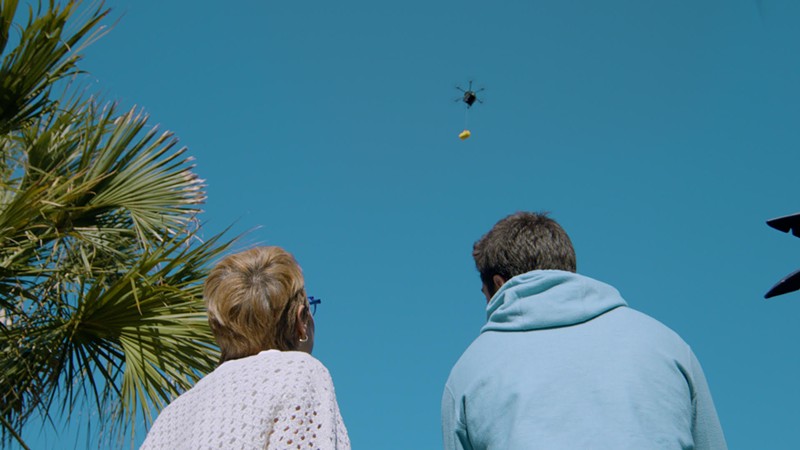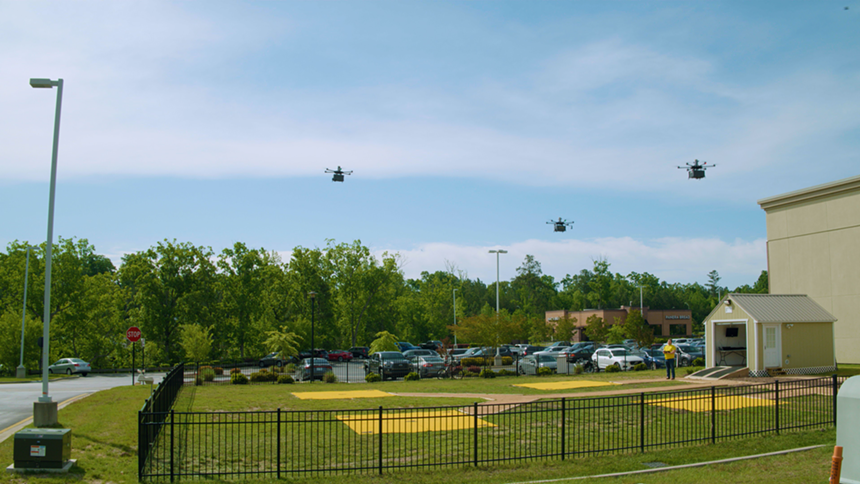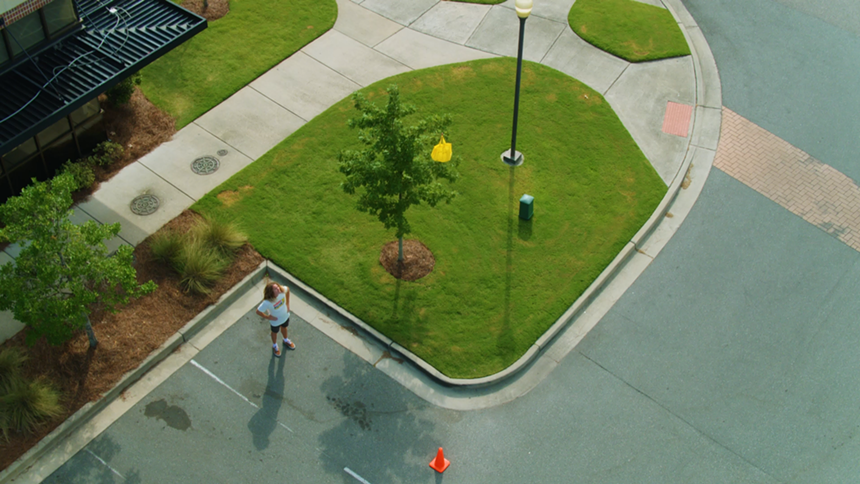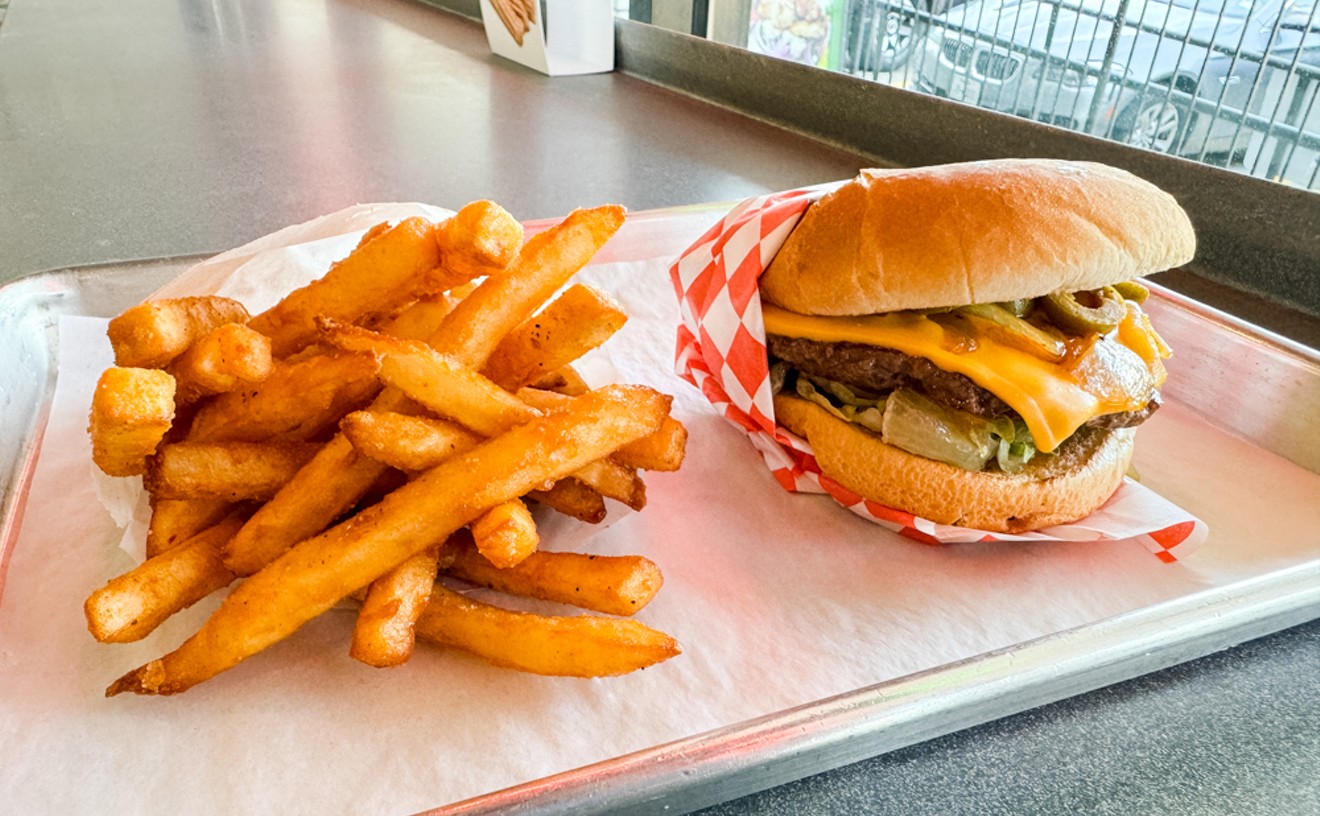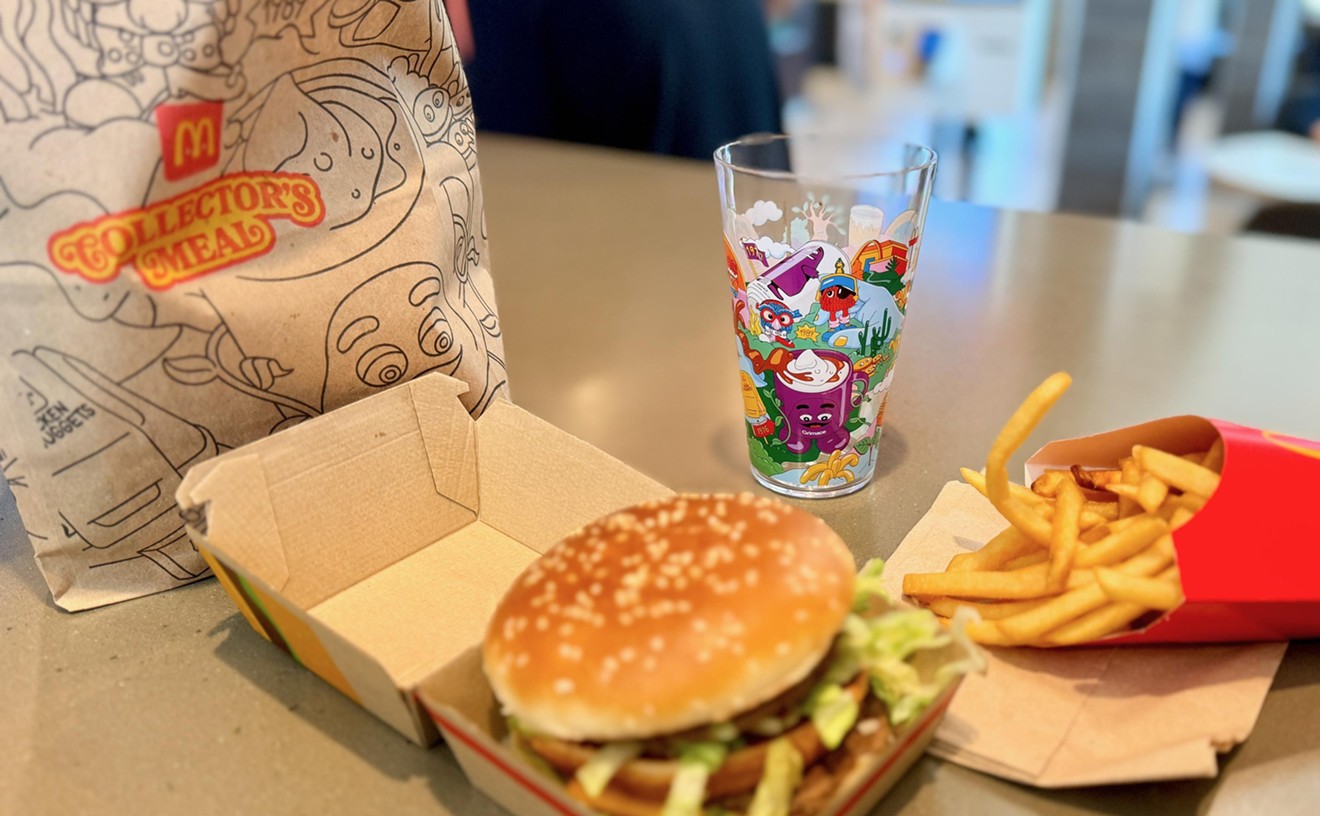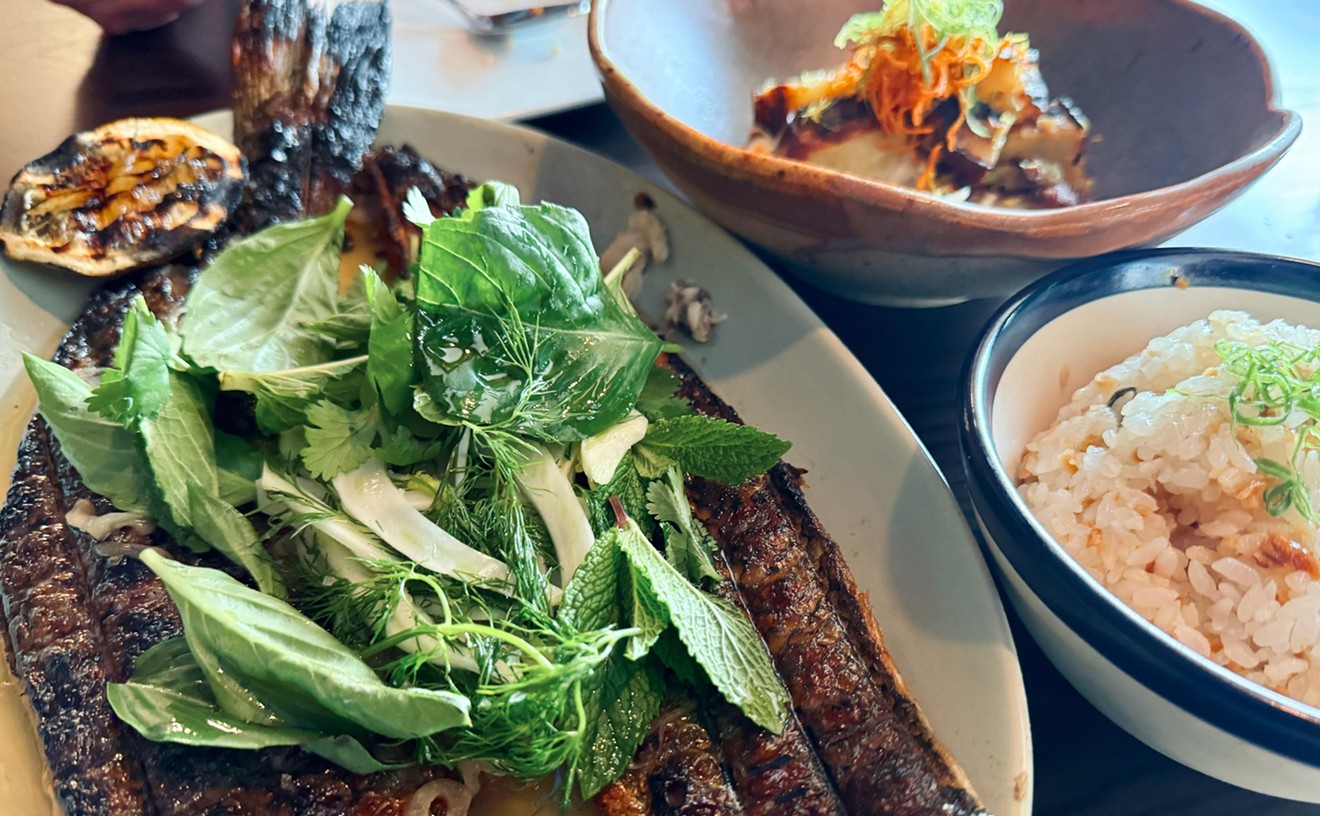Here's how it works: First you download the Flytrex app and drop in an address to see if delivery is available to your home. If it is, there are about three dozen restaurants to order food from, much like any car-based delivery app, including White Rhino Coffee, Whataburger, Jack in the Box, The Brass Tap and many local restaurants. Place an order. A Flytrex employee picks it up at the restaurant, brings it to the drone launch site (a grassy yard), pops it into the drone and a few minutes later, it's dropped off in your yard
We had so many questions. Like, what about ice cream? Won't it melt? The company says no because delivery in a drone is much faster than in a car. Ohhhh. No stoplights.
So we spoke with Flytrex's CEO and co-founder, Yariv Bash, about the evolution of this project. Bash is no stranger to flight: he was co-founder of Space IL, a nonprofit that landed a robotic craft on the moon. While he's still involved in that project, he's also intent on making drone deliveries a part of everyday life here on Earth. Mostly we wanted to know how soon drone-based food delivery will be widespread in North Texas.
To date, Flytrex has made more than 100,000 deliveries via drone from its two sites in North Texas and one in North Carolina. The Little Elm station has about 1,500 active users. The delivery range for a drone is 2.5 miles from the site. Once in the sky, it takes about three minutes for delivery.
Here's our Q&A with Bash:
Q: How much weight can each drone carry?
A: Currently, it's six and a half pounds. No matter what you order, we're going to get you your order, either with two drones or even a human being if it's too heavy. But we are here to deliver your dinner or lunch. So we'll make sure that it happens.
Q: Once at a destination, does the drone land on the ground?
A: We use a tether [to drop bags down]. We need an empty space of roughly 10 by 10 feet, but the U.S. suburbs are amazing for that.
Q: Is theft a problem?
B: Not at all. A lot less than with the regular deliveries. If you're ordering something on Amazon or with FedEx, they leave it on your front door, then it's a problem. But when you are ordering a pizza or a burrito, that's not a problem. And when we deliver to your backyard, that's also much less a problem.
Q: No one ever tries to steal the drones by grabbing the tether?
A: You can pull the tether and we just release it and fly out. We've done 100,000 deliveries by now. We are real experts on anything that could happen. There's not a lot that could happen to the drone. It's 85 feet up in the air.
Q: Are there airspace restrictions? What are the laws regarding flying a drone in a city?
A: We are heavily regulated by the FAA [Federal Aviation Administration], and the location of each station. And it [a Flytrex drone] might look like a drone you can buy online, but it's actually a drone that went through a five-year certification process with the FAA. That's why we are allowed to fly above people's houses and do these kind of deliveries. It [the drone certification] is not something that you can get quickly. We've done 100,000 commercial flights to people's backyards to paying customers. We've done almost an order of magnitude more flights than that during testing.
Q: How realistic is widespread drone delivery?
A: The future is already here. It's just not evenly spread. In places like Granbury and Little Elm, it's already a daily reality. The first time they order with a drone, everybody's outside taking a selfie. By the third or fourth time, it just becomes the new normal and they just keep using it. It's faster, it's more affordable. And the repeatability, you get your food hotter and faster time and time again. So people just enjoy using the service time after time.
Q: What's the time frame for expansion?
Currently, we're waiting for an additional FAA approval. Once we have that, we'll be able to scale our service on a much bigger scale. So I expect that during next year we're going to see more flight decks delivering stations across Texas and hopefully across the U.S.
Q: A bigger scale for Flytrex specifically?
A: For the entire industry. There are a few other companies: Google by Alphabet and Amazon, but they're not ones to deliver burritos. They're going to do Amazon packages and warehouses. They're a different market, and all of us are getting those needed approvals. Simultaneously, once the market opens up, you're going to see a lot more delivery happening.
Q: Is there a specific regulation or law that everyone is trying to get pushed through?
A: Basically we are, all the companies are now allowed to fly multiple drones using a single operator. We can fly beyond the visual outside of that operator. So it's commercially viable as a service. That's the important part. However, currently we need people to watch the skies for incoming airplanes, and the bigger the area, the more people you need to look for incoming airplanes. So it doesn't make sense to scale too much because we're losing money for delivery because we have all those people watching the skies for incoming airplanes. We have all the different companies I've mentioned working with the FAA on removing those people and replacing them with affordable technology. And that's actually happening in the, let's say, immediate future for all the different companies. So by early next year, we're going to see bigger deployments of drone deliveries just because the commercial barrier of making those unit economy-positive or money-positive machines is becoming very relevant.
Q: So you basically need air traffic control for drones?
A: Yes, it's air traffic control, and it's the ability to avoid other aircraft. A system needs to be in place.
Q: And then, how high do your drones fly?
A: It's usually between 200 and 300 feet.
Q: What are the major hurdles?
A: As I've mentioned, the public is already accepting these kinds of deliveries where we are operating. The market's already there. Restaurants perform a lot of deliveries these days. Customers enjoy ordering food. So it's just another method of performing those same deliveries, only it's faster and more affordable. So the only hurdle left is the regulatory one. The FAA is doing amazing work on their end. It's taking time, and that's in everybody's best interest because we want to make sure that those skies are as safe as they are to date.
Q: Do you guys make money from the customers or from the restaurants?
A: Just as traditional on-demand players, we take a bit from the restaurant but a lot less than anyone else. Listen, using a one-ton car to deliver the burrito, that's insane. It costs a lot of money. Pollution-wise, it's horrible and accident-wise it's just a horrible solution. So replacing that with a 100% electric vehicle that weighs 30 pounds makes a lot of sense. [In a follow-up question about fees, Flytrex told us they charge about one-third of what other delivery apps do.]
Q: So how do you get the food from restaurants?
A: Currently we pick up the food from the restaurants using humans [in cars]. Restaurant-wise, it's a lot more affordable to have a guy just picking up the package from the restaurant and bringing it to a [Flytrex] station nearby, than having that guy drive a car to the house. It's already better and it's going to get even better with picking up at the restaurants. Our next version of the system, the drone will just be performing curbside pickup from the restaurant.
Q: So, ideally, the drone will fly to the restaurant, someone will load it and then the drone will fly directly to the customer's location?
A: Exactly.
Q: How far away are we from that?
A: That's going to happen later this year.
Flytrex plans to open four more stations in North Texas in Q4 2024.
Here's a video of how it works.

